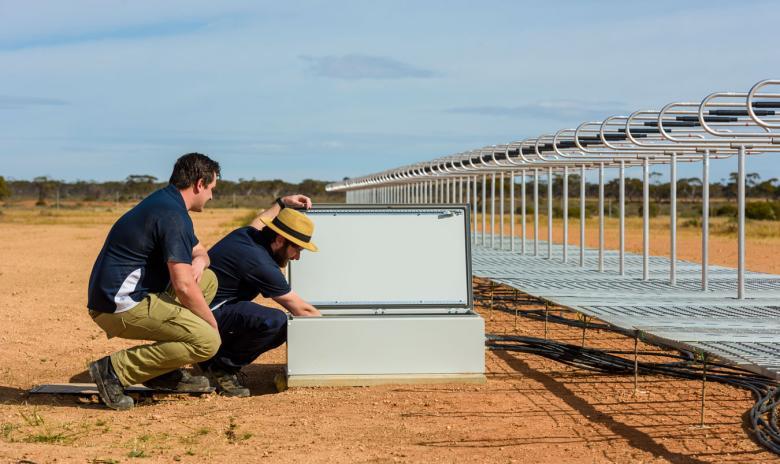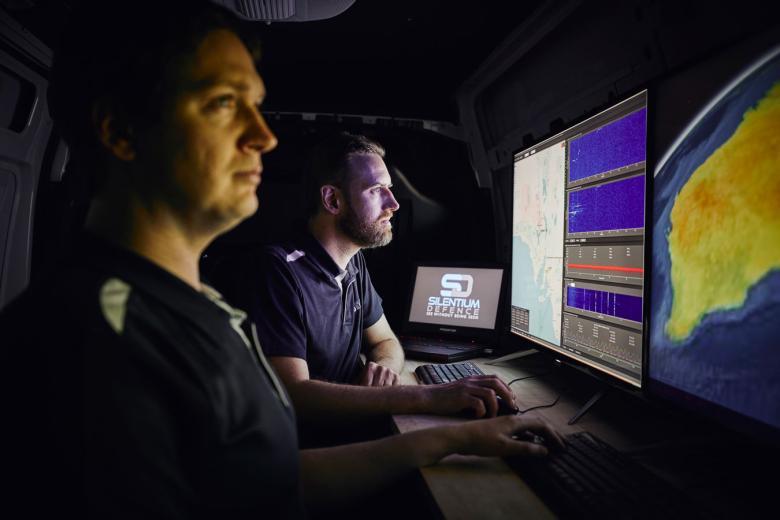Space near Earth is fast becoming crowded. There are around 8,000 satellites orbiting Earth, and it’s expected that number will reach 100,000 in just the next 5-10 years. Add on other infrastructure and floating junk, and you’ve got a seriously busy place.
Given how critical those satellites are to our everyday life, keeping things in order is an important task for well-trained eyes. Australian company Silentium Defence has some of the world’s best.
Silentium was established in 2017 to design and produce surveillance products using its unique passive radar technology.
Passive radar is popular in defence because the user can ‘see without being seen’, as Silentium’s motto suggests. However, it can also be used to improve situational awareness of space objects.
Backed by a $1.46m Expand Capability grant from the Australian Space Agency’s International Space Investment initiative, Silentium has built a world-class observatory in the astronomy-friendly region of Swan Reach, South Australia.
The Oculus Observatory provides the widest field of view of objects in low Earth orbit, and will combine passive radar and neuromorphic imaging technologies. It’s the first of its kind in the Southern Hemisphere, and a beacon of critical data for the international space industry.
Resourceful radar
Our atmosphere is full of RF energy from the transmission of services like television and radio. Passive radar systems use this energy to bounce signals off objects in low-earth-orbit and track their path – avoiding the need to generate energy themselves.
Silentium CEO Dr James Palmer says this has several advantages.
“The sensors at our Observatory require less power, less maintenance, and less costly infrastructure to deploy than current surveillance technologies. This makes them more cost-effective, safe, and easy to deploy” said Dr James Palmer, Silentium Defence.
The Oculus Observatory features Silentium’s MAVERICK S system, a world-first commercial-scale Space Situational Awareness (SSA) passive radar.
The MAVERICK S data is used to map space traffic and predict the trajectory of objects in orbit. The technology is also portable.
“Our passive radar sensors can operate remotely, from any location across the globe, and exploit megawatts of transmitted power from pre-existing transmitters,” James says.
Added imaging power
The observatory will also feature an Astrosite neuromorphic imaging sensor from Western Sydney University.
Its eye-like camera detects changes in light and takes pictures to reveal the size and trajectory of objects that caused them.
This detailed focus combines with the MAVERICK S radar’s wide field of view to provide comprehensive awareness of space objects.
North-south collaboration
To complement surveillance at the Oculus Observatory, Silentium will acquire Northern Hemisphere SSA data from the Swedish Space Corporation (SSC).
The organisations will combine data to develop an advanced catalogue of orbital debris that serves the global space community and opens up new possibilities.
“Enabling detection, tracking, and management of objects means we can continue to put more into space, and safely realise the new and incredible products and benefits we haven’t even thought of yet,” James says.
"Safe and sustained use of space is predicated on access to quality, accurate, and timely data for more informed decision making, and that’s what Oculus provides.”



